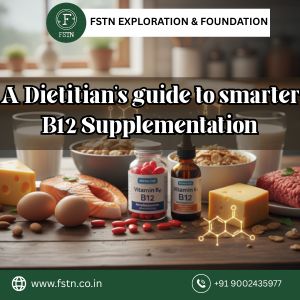World Hepatitis Day 2025 is observed with the theme: "Hepatitis: Let's Break It Down." This theme highlights the importance of making hepatitis services more accessible and integrated into national healthcare systems by focusing on:
- Simplifying Healthcare Services
- Removing barriers to access
- Advancing toward global elimination goals
World Hepatitis Day, observed every year on July 28, is a global initiative to raise awareness about Viral Hepatitis and to encourage prevention, diagnosis and treatment. Organized by the World Health Organization (WHO), this day marks the birth anniversary of Nobel Laureate Dr. Baruch Blumberg, who discovered the hepatitis B virus and developed a vaccine for it.
Hepatitis is an inflammation of the liver, often caused by viral infections. The liver is essential for digestion, detoxification, and metabolism. When inflamed, it cannot function properly, leading to serious health risks and even death if left untreated.
Causes of Hepatitis:
Viral infections: There are 5 types of Viral Hepatitis i.e. Hepatitis A, B, C, D, and E caused by different types of Virus.
Alcohol abuse: Long-term excessive drinking damages liver cells.
Autoimmune response: The body's own immune system attacks healthy liver cells.
Toxins or medications: Certain drugs and chemicals may trigger hepatitis.
Contaminated food or water: Especially in Hepatitis A and E.
Symptoms:
- Jaundice (yellowing of eyes/skin)
- Fatigue and weakness
- Nausea and vomiting
- Abdominal pain (right upper side)
- Dark urine and pale stools
- Loss of appetite
- Joint pain and fever (sometimes)
Risk factors across different age groups with causes:
Newborns: High chronic Hepatitis B risk from infected mother (Perinatal Transmission).
Infants (0–1 year): Susceptible to Hepatitis A & B due to underdeveloped immunity, unvaccinated status.
Children (1–10 years): Risk of Hepatitis A outbreaks from poor hygiene, contaminated food or water, lack of vaccination.
Adolescents: Risk of Hepatitis B or C due to needle sharing, tattoos, piercing with unsterile tools.
Adults (20–60 years): Risk of Hepatitis B,C or D from drug use, unsafe sex, past blood transfusions, alcohol abuse.
Older adults (60+years): Severe Hepatitis A,B,C outcomes due to weaker immunity, polypharmacy (multiple medications), lack of early diagnosis.
Pregnant women: Severe Hepatitis E from contaminated water.
Prevention:
- Take Vaccine which is available for hepatitis A and B
- Practice safe sex and avoid sharing personal things
- Use sterile medical equipment
- Maintain good sanitation and hygiene
- Screen blood before transfusion
- Regular health check-ups, especially in high-risk individuals
Foods to be included:
A well-balanced diet helps the liver recover and function efficiently:
- Lean proteins (egg whites, fish, pulses) for tissue repair.
- Fruits and vegetables for vitamins and antioxidants to combat viral infection.
- Whole grains provides high fiber along with high energy need.
- Healthy fats like flaxseeds, walnuts and olive oil to meet fat requirement of the body while avoiding the visible fat in daily food intake.
- Plenty of fluids to flush out toxins and support liver detox.
Foods to be Avoided:
- Alcohol: Can worsen liver damage
- Fried and high Fat Contained Foods: Hard to digest and may increase inflammation
- Sugary Foods: Can lead to fat accumulation in the liver
- Processed and Salty Items: May cause fluid retention and stress the liver
- Raw or Undercooked Shellfish: May contain hepatitis A or E viruses
If Left Untreated:
Chronic hepatitis can causes Liver Cirrhosis, Liver Failure or even Liver Cancer. It may progress silently for years, making early diagnosis crucial.
Be Aware:
World Hepatitis Day is not just a date — it's a movement to Educate, Prevent and Heal through Early Detection, Lifestyle Care and Public Health efforts, We can Eliminate Hepatitis and Protect Upcoming Generations.



